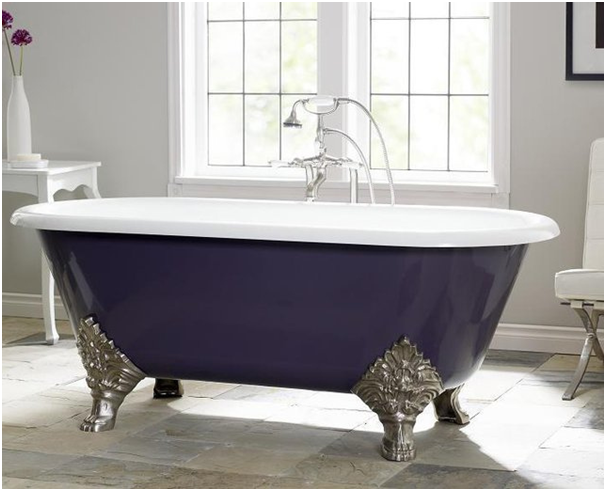The traditional design of a cast iron bath is becoming increasingly popular, and not just because of its aesthetic appearance. These types of baths also have an incredibly sturdy construction and are able to retain heat, keeping your bath water warmer for longer. Even though many of the original cast iron tubs were made by using iron ore, those made today normally involve far more eco-friendly products and construction techniques.

Using Scrap Materials
Many cast iron baths can now be made from scrap materials such as old radiators, manhole covers, car parts and water pipes. This is a much more cost-effective way of constructing the bath and is also a sustainable way of creating these elaborately designed bath tubs.
In order to turn pieces of scrap metal into a cast iron bath, manufacturers need to use an electric induction furnace. Reaching temperatures more than 1,400 degrees Celsius, these furnaces turn the metal into liquid iron, which will then be placed into the moulds of the bath.
Moulds for Baths
The mould of a bath is created using clay and moist sand, which is then placed into a steel pattern where a hydraulic ramp firmly presses down on the mixture. Once this has been done, a machine will lift the mould out of the pattern before the molten iron is poured into a small gap in the mould.
This is left to cool for 20 minutes where the iron will solidify and harden. The iron is then broken away from the mould and becomes ready for all of the finishing touches you can see when you view a range of cast iron baths.
Glass powder is sprayed onto the surface of the bath to get it ready for its enamel coating. This glass is then melted by baking the bath until it starts to look red, and once this has been done, another coating will be added straight away. This will melt as soon as it hits the bath, as it has retained its heat from its original bake. The process will then be carried out once more to create an even stronger bond for the enamel.
Then, it is time for all of the finishing touches that will help to bring this bath to life. These include decorative touches such as claw feet.
